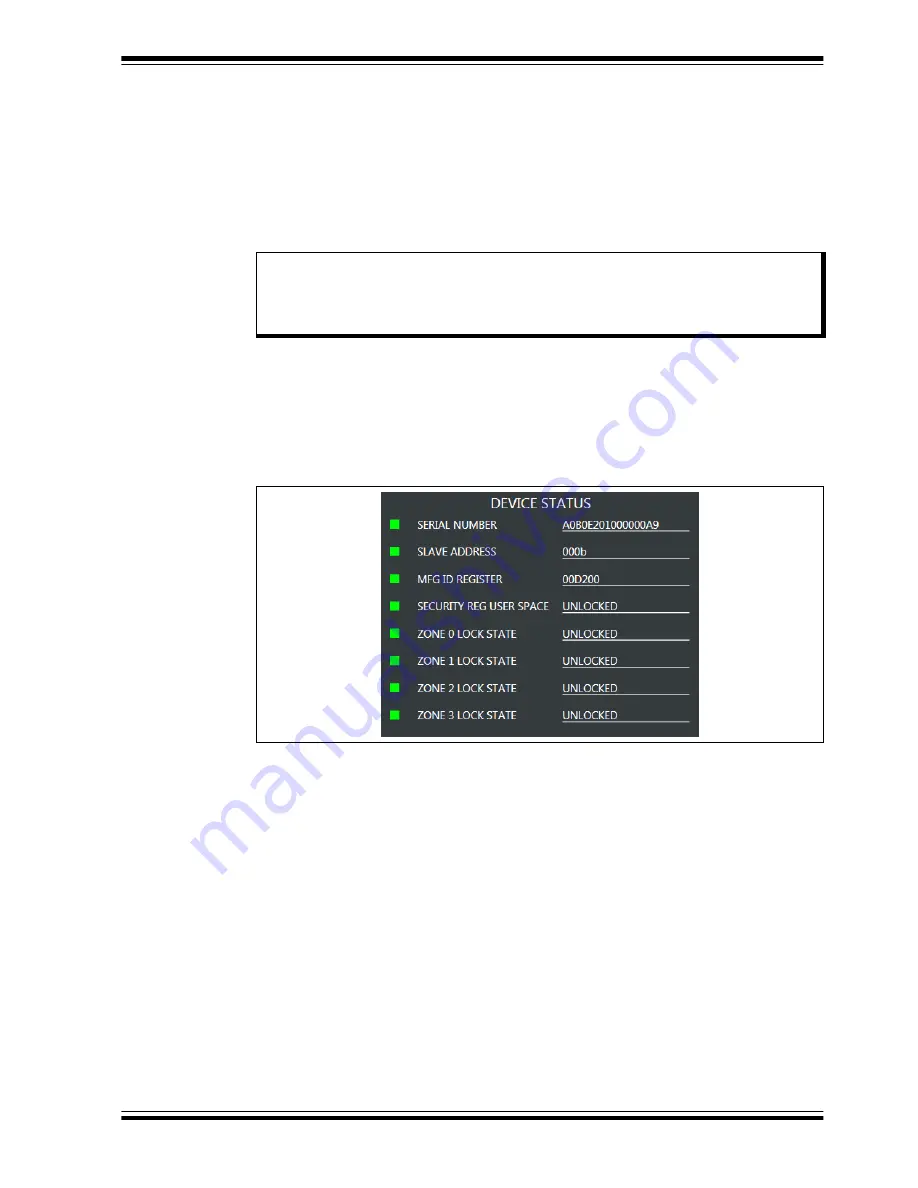
DM160232 Serial Memory Single-Wire Evaluation Kit User’s Guide
2018 Microchip Technology Inc.
DS20005939A-page 20
3.5.2
Frequency (Kbps) Slider
The frequency slider provides the ability to change the I/O or communication speed
between the host controller (USB Base Board) and the installed device. The user can
change the I/O speed by either clicking along the slider or dragging the indicator to the
desired I/O speed. The upper and lower frequency limits of the frequency slider are
determined by the installed device specification. Whenever the GUI is initially started,
the frequency slider will default to High-Speed mode to ensure the installed supported
device is able to communicate with the host controller.
3.6
DEVICE STATUS
The Device Status pane shows various Serial EEPROM device features including the
serial number, the device slave address, the Manufacturer (MFG) ID register, the lock
state of the Security register, and the lock state of the memory zones (Zone 0 -Zone 3)
(
FIGURE 3-7:
DEVICE STATUS PANE
3.6.1
Serial Number
Displays the serial number read from the Security register of the installed supported
device. The serial number is displayed in hexadecimal.
3.6.2
Slave Address
Displays the preprogrammed device slave address of the installed device. The slave
address is populated with A2 bit first, A1 bit second, and A0 bit last. The slave address
is displayed in binary.
3.6.3
MFG ID Register
Reports the content of the installed device’s Manufacturer ID register. The data is
displayed in hexadecimal.
3.6.4
Security Register User Space
Displays the lock state of the Security register. If the register is not locked, UNLOCKED
is displayed. If the register is locked, LOCKED is displayed.
Note:
The Device Query feature communicates with the Serial EEPROM using
High-Speed mode. Therefore, whenever the Device Query feature is used,
it will revert the installed device back to High-Speed mode regardless of the
current frequency slider setting.
















































